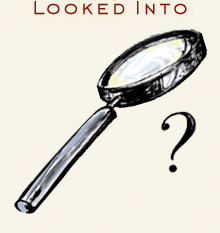Emdashes—Modern Times Between the Lines
The Basics:
About Emdashes | Email us
Ask the Librarians
Best of Emdashes: Hit Parade
A Web Comic: The Wavy Rule
Features & Columns:
Headline Shooter
On the Spot
Looked Into
Sempé Fi: Cover Art
The Wavy Rule, a Daily Comic by Pollux: Parallel Parking
Filed under: The Wavy Rule Tagged: automobiles, cartoons, comics, Pollux, The Wavy Rule

Click on the image for a detailed view! (continued)
The Wavy Rule, a Daily Comic by Pollux: Crabby
Filed under: The Wavy Rule Tagged: cartoons, comics, crab, Pollux, The Wavy Rule

Click on the image for a detailed view! (continued)
The Wavy Rule, a Daily Comic by Pollux: Semicolon Shirts
Filed under: The Wavy Rule Tagged: cartoons, comics, Pollux, The Wavy Rule

Click on the image for a detailed view! (continued)
The BP Logo: Emblem of an Evil Empire
Filed under: Looked Into Tagged: BP, environment, graphic design, Greenpeace, logo, Margarit Ralev, mythology, oil, Pollux, Star Wars

Pollux writes:
You’ve seen it in the news a lot recently. You’ve seen it online. It graces the sides of unsafe oil rigs. It’s the BP logo.
The sunburst logo debuted in 2000 in an explosion of green, white, yellow. The logo unveiling was accompanied by mythological references to Helios, the Greek god of the sun (and the father of Phaëton, who irresponsibly set the earth on fire). (continued)
Laura Bush: Unexpectedly, Probably Inadvertently, Fascinating
Filed under: The Squib Report Tagged: Chris Wallace, femininity, gender, George W. Bush, Laura Bush, Michelle Obama, politics

Martin Schneider writes:
I'm still reeling from the resentments and denial and misguided assumptions inherent in Laura Bush's interview with Chris Wallace of FOX News, as quoted in this Jezebel post, anyway. (I haven't watched the interview itself.)
The takeaway is that Laura Bush censored herself in order to conform to the image of a good conservative wife, and now she's upset that she doesn't get the fawning press that Michelle Obama gets. Something like that. For me, the whole thing is resonant in tons of ways, as if the cross-section of gender, politics, and society isn't generally volatile.
Bush's mild griping about being placed in a "box" proves yet again that when it comes to femininity, even relatively shrewd choices that involve denying one's own power as a woman are counterproductive. Laura Bush, who I believe is pro-choice, anti-war, and in favor of increased civil rights for homosexuals, took one for the team, played the quiet wifey, and now she envies liberal women who, whether it works out (continued)
Threadless Watch: Another Great Shirt
Filed under: Looked Into Tagged: Aaron Barnes, animals, design, fashion, Helvetica, numbers, skunks, T-shirts

Emily writes:
This 2 is a skunk. It’s by Aaron Barnes, whose portfolio you can and should see here.
Recently in Threadless Watch: Is “Helvetica” An Aphrodisiac? (continued)
(Review) Back to Back: Jules Feiffer's Backing Into Forward
Filed under: Looked Into Tagged: Alan Dunn, books, cartoons, Charles Addams, comics, Frank Modell, George Price, Gluyas Williams, Helen Hokinson, Jules Feiffer, memoirs, Peter Arno, Pollux, reviews, Sam Cobean, Whitney Darrow, Will Eisner

Pollux writes:
On a recent trip to New York, I was accompanied by Jules Feiffer’s autobiography, Backing Into Forward (published by Nan A. Talese). Between snatches of fitful, airborne sleep and occasional glances at a muted version of Hachiko: A Dog’s Story, Feiffer’s book served as a great and inspiring companion.
Backing Into Forward can be read non-linearly. Feiffer’s book reads less like a traditional autobiography than a collection of self-contained, stand-alone essays. Like Feiffer’s comic strips for The Village Voice, each piece throws light on a particular anxiety, time period, or person. Backing Into Forward has chapters named, for example, “The Jewish Mother Joke,” “Hackwork,” “Mimi,” “Lucking Into the Zeitgeist,” and “Process.”
The chapter named “Process,” for example, consists of a single page. Feiffer describes his process for arriving—or not arriving—at a completed comic strip. “I’d be humming along nicely—and then I’d arrive at what should have been the last panel without a thought in my head. I didn’t know how to end the thing. So I’d stash the idea in a drawer and forget it. A year or ten or twenty-five went by and, searching for something else, I’d come across the unfinished idea. Thirty seconds later the ending would announce itself. I’d draw it and send it in. Twenty-five years in the making: a comic strip.”
Feiffer skips backward and forward into time as he writes about (continued)
Stop Being So "Smug," Imaginary New Yorkers!
Filed under: The Squib Report Tagged: Andrew Sullivan, bigotry, Cleveland, Conor Friedsdorf, culture, Ezra Klein, Martin Schneider, New York City, Ta-Nehisi Coates, Texas

Martin Schneider writes:
Recently Ezra Klein, Ta-Nehisi Coates, Conor Friedersdorf, and Andrew Sullivan have been blogging about New York City's overweening cultural clout and—interesting, this—the tendency of its residents to behave in a smug manner.
I must say, the discussion has been extremely disappointing, and I came away from it feeling frustrated, annoyed, and not a little insulted. I guess it is helpful to find out how much people dislike you for reasons that seem insufficient or inaccurate. Such is the power of cultural envy, or something like cultural envy.
The discussion proceeded along the following lines: Friedersdorf wrote about New York's worrisome centrality in all cultural matters and its pernicious effects on other major cities. Sullivan weighed in, agreeing and complaining about how "irritating" New Yorkers' "narcissism" is. Accepting New Yorkers' smugness as a given, Coates then wrote a fairly empathetic post in which he gamely tried to put that (continued)
Sempé Fi: Out With the Old
Filed under: Sempé Fi Tagged: art, BEK, Bruce Eric Kaplan, cartoons, covers, Pollux, Seinfeld, television

Pollux writes:
The work of Bruce Eric Kaplan, also known by the shorthand of BEK, graces both the inside and the outside of the May 3 issue of The New Yorker. That’s quite a coup for an artist who used to live “in a space that was meant to hold just one car and maybe some old boxes or tools or whatever it is people put in (half of) a garage” and submitted cartoons to The New Yorker for three years before one was accepted. (continued)
The Wavy Rule, a Daily Comic by Pollux: Crowe is Copernicus
Filed under: The Wavy Rule Tagged: astronomy, cartoons, cinema, comics, Nicolaus Copernicus, Pollux, Russell Crowe, The Wavy Rule

Click on the image for a detailed view! (continued)







